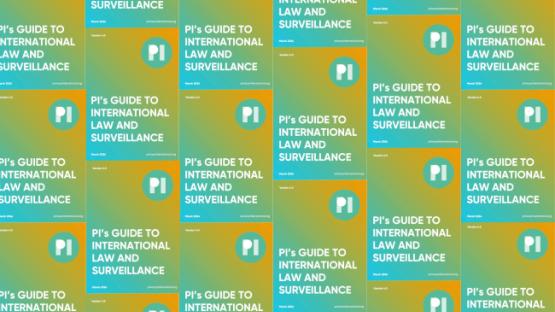
PI’s Guide to International Law and Surveillance
PI’s Guide to International Law and Surveillance providing the most hard-hitting results that reinforce and strengthen the core principles and standards of international law on surveillance.

First published in 2017, PI’s Guide to International Law and Surveillance is an attempt to collate relevant excerpts from these judgments and reports into a single principled guide that will be regularly updated. This is the fourth edition of the Guide. It has been updated it to reflect the most relevant legal developments until March 2024.
The Guide aspires to be a handy reference tool for anyone engaging in campaigning, advocacy, and scholarly research, on these issues. The fourth edition has been updated to reflect the most relevant legal developments since then. This includes:
- New resolutions adopted by the UN General Assembly and the UN Human Rights Council;
- Extracts from the most recent reports of different UN bodies; as well as
- Extracts from the most recent judgments of the European Court of Human Rights.
You will find, among others, new entries on encryption, spyware, extraterritorial jurisdiction in surveillance, and facial recognition technologies reflecting the continuous evolution of the field of international law and surveillance. It also features new sections dedicated on “safeguarding civic spaces”, “the role and responsibilities of companies in surveillance”, and “acquiring and selling surveillance equipment”. Here are some of the extracts you can find there.
Its ever-increasing number of pages cannot be missed. The amount of relevant pronouncements by human rights mechanisms reflects the growing recognition of the need to showcase that surveillance and evolving technologies do not escape international law norms, and to alert that the latter offers important signposts on the conditions under which surveillance can be carried out.
Here are a few useful tips to make the use of the Guide easier:
- It is not meant to be read it cover to cover;
- We suggest that you either use the table of contents or search for key words to find the most relevant quotes for you;
- In certain sections, you will find a brief explanatory note on the top clarifying the content therein and any connections with other sections;
- The quotes in each section appear in accordance with their source in chronological order, starting from the UN sources (i.e., resolutions, reports, concluding observations, individual complaints) and then looking into regional human rights systems;
- Certain quotes have been shortened to focus on the essence of the standards they provide. On occasion, it may be useful to go back to the original source;
- You can click on the number of any document to access the full document;
- Boxes across the guide highlight the most substantive articulation of the human rights standards applicable to the sub-issues covered under the relevant section. If you cite nothing else, these are the quotes that you want to reference;
- Only final judgments of the European Court of Human Rights are included.
The guide is a living and breathing document and we will be adding new content as more statements and resolutions emerge. Please reach out to us via email (info[@]privacyinternational[.]org) if you think there any additional references we should add, or topics you want us to cover.
We would like to thank Mina Radoncic for working with us to update the new version. We couldn’t have finished the new edition without her.



